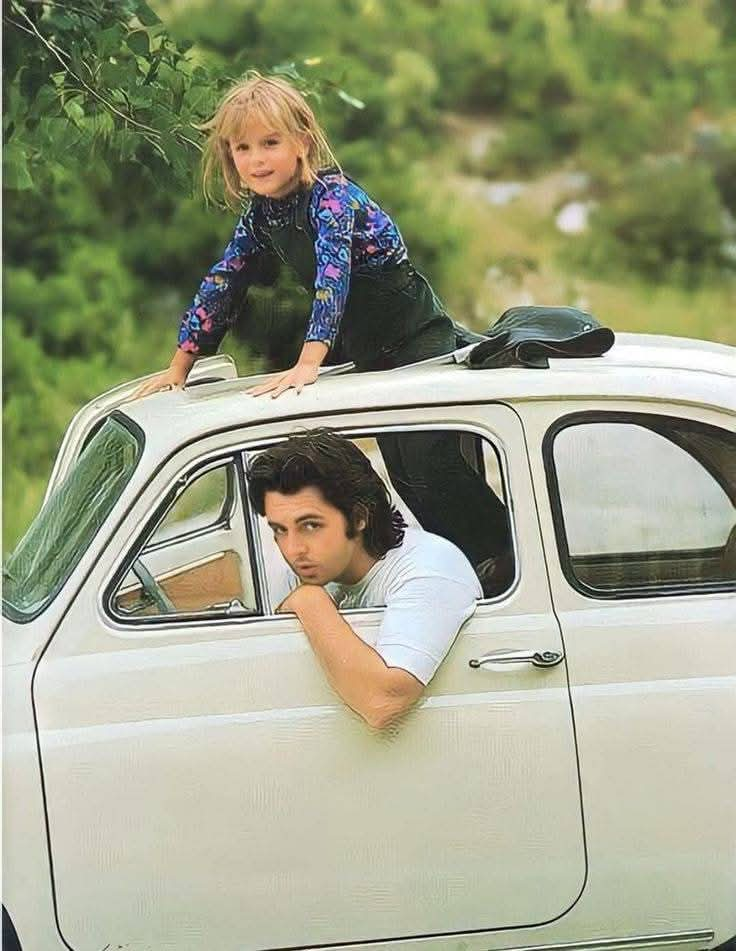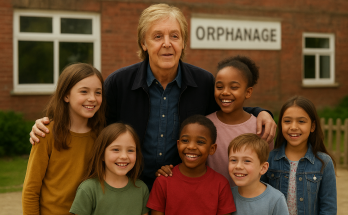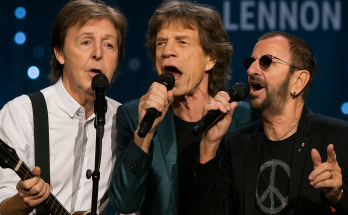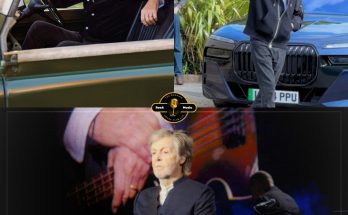On August 29, 1969, a quiet yet deeply meaningful moment unfolded inside the London home of Paul McCartney and his wife, Linda Eastman.
Together with their infant daughter, Mary McCartney, the young family shared a tender scene that would, in time, be remembered not just as an ordinary day — but as the beginning of a new chapter for Paul. While the world still saw him as a Beatle, inside those walls, he was becoming something far more personal: a husband, a father, and an artist on the cusp of reinvention.
That summer marked a turning point for Paul. The Beatles were nearing their end — emotionally fractured and struggling under the weight of fame, creative differences, and business complications. Yet, even as the band unraveled, Paul was quietly discovering something far more grounding than the noise of global stardom: family.
Paul had met Linda Eastman in 1967 in London. She was not just a skilled photographer, but someone with her own creative identity — someone who didn’t just admire his art, but challenged and expanded it. Their connection was instant, but what followed was even more powerful: a partnership that would carry Paul beyond the Beatles and into a new phase of life. Linda’s artistic eye and grounded nature became a compass for Paul during this period of uncertainty.
By early 1969, Linda had given birth to Mary McCartney, their first child together. Their London home, once a place for songwriting and band meetings, evolved into a sanctuary filled with the sounds of a new kind of music — baby giggles, soft conversations, and the click of Linda’s camera shutter. It wasn’t just a home. It was the cradle of Paul’s future.
The date August 29 would later be marked as Mary’s 55th birthday, but in 1969, it was simply a moment of peace — one that offered Paul a glimpse of life beyond The Beatles. This was the very same year the band walked across Abbey Road for the last time, but it was also the year Paul was learning to walk a new path — one shaped not by global headlines, but by family dinners, bedtime stories, and the creative freedom that came from unconditional love.
In the years that followed, Paul and Linda’s partnership grew not just as a couple but as collaborators. By 1971, they had formed Wings, a band that would redefine Paul’s post-Beatles era. Linda’s presence in Wings was revolutionary in its own quiet way — as one of the few women in a prominent rock band during that time, she brought a warmth and authenticity to the music that critics would come to appreciate, even if they didn’t understand it at first.
The McCartneys raised their children — including Mary — not in the glare of the spotlight but in serene retreats in Scotland and quiet corners of the UK. Mary’s upbringing was soaked in creativity, photography, and a strong sense of activism and family. It’s no surprise that she grew into an accomplished photographer and documentarian herself, carrying forward both her parents’ artistic legacy.
For Paul, those early years of fatherhood would seep into his music, shaping songs that were softer, more reflective, and deeply personal. Tracks like “Maybe I’m Amazed,” “My Love,” and the entire Band on the Run album (1973) echo the emotions of a man who had lost one identity — as a Beatle — but gained another far more lasting one: as a husband and father.
In the end, August 29 wasn’t just the birthday of Mary McCartney.
It was the quiet beginning of a life where love, art, and family would guide Paul McCartney for decades to come.



